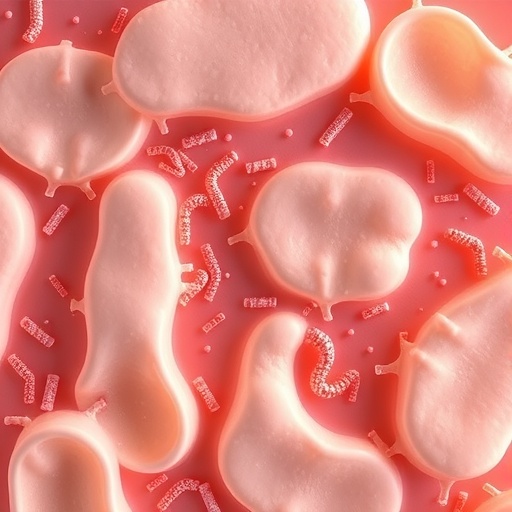In recent years, antibiotic resistance has emerged as one of the most pressing challenges in global public health. Various strains of bacteria are evolving and adapting to resist the very antibiotics that once effectively controlled them. Among these strains, biofilm-forming Escherichia coli, commonly found in water systems and on various surfaces, has drawn considerable attention. Recent research highlights the environmental distribution of these antibiotic-resistant pathogens, particularly focusing on their prevalence on plastic surface materials.
The ubiquitous presence of plastic in our environment has created new habitats for microorganisms. Notably, these plastics offer an ideal surface for biofilm formation, which is a protective layer of bacteria that adheres to surfaces. The slick, non-porous nature of plastic allows for beaches and aquatic ecosystems to become breeding grounds for biofilm-forming bacteria. The interaction between these materials and bacteria forms a complex web that facilitates the spread of antibiotic resistance.
This rise of antibiotic-resistant E. coli on plastic surfaces is alarming since these surfaces are prevalent in multiple professions, including healthcare and food production. In hospitals, antibiotic-resistant strains reside on surfaces such as medical devices and personal protective equipment, while in food production settings, contaminated plastic wrap and containers can introduce these pathogens into the food supply network. Ultimately, the presence of these bacteria poses immense risks to human health, making it imperative to address the factors contributing to their spread.
What is particularly concerning is that once E. coli forms a biofilm on plastic, it becomes significantly more resistant to antibiotic treatment compared to its planktonic counterparts. This resistance not only complicates treatment strategies but also necessitates more robust infection control measures in various environments. The ability of these bacteria to adapt and thrive in their settings underscores the need for ongoing research to determine effective methods for sanitizing these surfaces and reducing bacterial load.
Environmental studies exploring this phenomenon have shown significant variability in the prevalence of these pathogens across different ecosystems. Factors such as water temperature, salinity, and nutrient availability can influence the presence and concentration of biofilm-forming antibiotic-resistant E. coli. For instance, higher temperatures may speed up the growth rate of these bacteria, while nutrient-rich waters allow for more robust biofilm development.
Moreover, the role of human activity in exacerbating this issue cannot be overlooked. Urban runoff, agricultural practices, and improper waste disposal contribute significantly to the spread of antibiotic-resistant bacteria in the environment. Consequently, areas with high human activity display higher rates of contamination, necessitating an integrated approach involving environmental management, antibiotic stewardship, and public health policy.
The research also highlights an intriguing debate around the dual-use nature of antibiotics in agricultural settings. While they serve a critical role in livestock health, their overuse can lead to the emergence of resistant strains that eventually contaminate waterways. A shift towards more sustainable agricultural practices could help alleviate some of these pressures, thereby reducing the spread of antibiotic resistance into the surrounding ecosystems.
Hotspots for biofilm formation often include waters and soils near industrial sites, wastewater treatment plants, and landfills, where plastic debris is abundant. Examining the spatial distribution of these bacteria in such areas reveals critical information regarding their ecology and dispersal mechanisms. Understanding how These pathways can help inform strategies aimed at mitigating the risk associated with these pathogens.
Additionally, innovative advancements are underway for the detection and remediation of biofilm-forming antibiotic-resistant bacteria. Researchers are exploring advanced technologies, including nanomaterials and novel surface coatings, to disrupt biofilm formation on plastics and other surfaces. These technologies aim to provide a first line of defense against bacterial colonization before it leads to larger-scale outbreaks of antibiotic-resistant infections.
The impact of climate change may further complicate matters. Altered weather patterns and rising temperatures can influence microbial growth and distribution, potentially causing an increase in the prevalence of biofilm-forming antibiotic-resistant E. coli on plastic surfaces. Understanding these climate interactions is critical for anticipating future challenges and developing adaptive strategies in public health.
As we confront the reality of a world increasingly riddled with antibiotic-resistant pathogens, community awareness becomes essential. Education around the responsible use of antibiotics, proper waste management, and the importance of public health measures can empower individuals to contribute to a collective solution. The role of scientific literature in disseminating this knowledge must not be understated; ongoing research will serve as a valuable tool in the ongoing battle against antibiotic resistance.
In conclusion, the environmental distribution of biofilm-forming antibiotic-resistant E. coli, particularly on plastic surfaces, is a multifaceted challenge that interweaves ecological dynamics, human activity, and public health considerations. Addressing this pressing issue will require robust collaboration between scientists, policymakers, and the public, emphasizing a holistic approach to managing antibiotic resistance in the environment. The more we understand the intricate relationships between bacteria, their environments, and anthropogenic influences, the better equipped we will be to combat the threats posed by these resilient pathogens in the future.
Subject of Research: Environmental distribution of biofilm-forming antibiotic-resistant Escherichia coli associated with plastic surface materials.
Article Title: Environmental distribution of biofilm-forming antibiotic-resistant Escherichia coli associated with plastic surface materials.
Article References:
Rafi, M.O., Hasan, M.A.E., Fahim, N.A.I. et al. Environmental distribution of biofilm-forming antibiotic-resistant Escherichia coli associated with plastic surface materials. Environ Sci Pollut Res (2025). https://doi.org/10.1007/s11356-025-36835-0
Image Credits: AI Generated
DOI: 10.1007/s11356-025-36835-0
Keywords: Antibiotic resistance, Escherichia coli, biofilms, environmental microbiology, plastic contamination, public health, climate change, microbial ecology.




